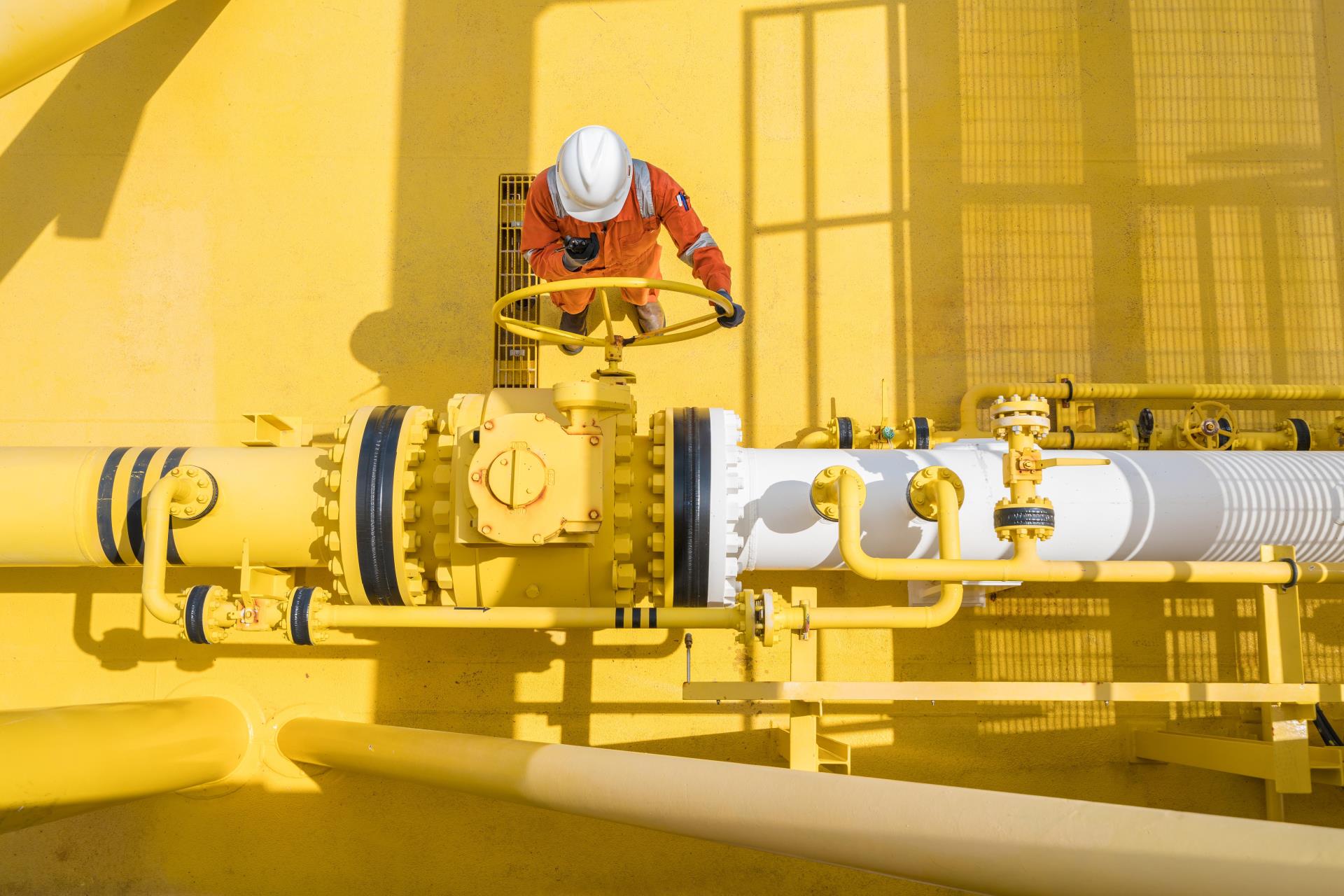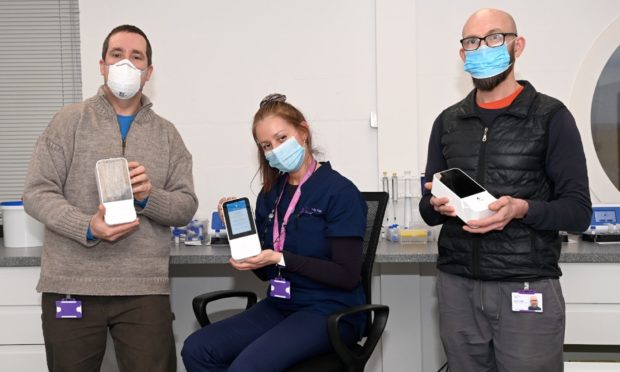Miraculous medical devices likened to a “laboratory in a box” could be key to getting the North Sea oil industry back on its feet, a leading Covid testing company has argued.
TAC Healthcare Group has carried out a total of 124,533 tests at its base on Wellheads Crescent in Dyce over the course of the pandemic, and estimates it counts more than 70% of the oil and gas companies currently working in the North Sea among its customers.
The organisation aims to catch as many people as possible who test positive for the virus in order to prevent disastrous outbreaks in the close confines of offshore installation environments through its rigorous testing procedures in Dyce.
Remote testing kits
But in order to identify the very few individuals who somehow slip through the initial testing process, the company has in recent months started sending out remote Lumira Dx testing kits to installations themselves, in order to carry out secondary testing and avert major incidents.
Since September, TAC Healthcare has sent out 64 of the small devices primarily to offshore operators, but also to a large marine supply and diving vessel company, as well as a theatre company in London.
So far, 10,452 tests have been carried out using the devices sent out by TAC Healthcare, shaped like very thick smartphones, with a positivity rate for people with the virus of 0.9%.
Using the machines, Covid test results can be delivered in under 20 minutes, and data is uploaded to the internet to help identify and isolate problems in a timely manner.
Dr Kieran Gullett, medical officer for TAC Healthcare, said the devices are like a “laboratory in a box”.
He said: “Offshore, they’re working in extremely remote, dense populations, and so are particularly vulnerable because of that.
“Our approach is a protective strategy to ensure the continuity of the offshore industry and safeguard its workforce.
“Just one individual being unwell offshore and having the capacity to infect others, could potentially lead to a very significant outbreak.
“We’ve got our onshore testing, but many operators are looking at secondary testing measures to deal with circumstances offshore that may require slightly higher protective levels.”
‘If they get offshore, there’s a real potential to infect the whole platform’

TAC Healthcare clinical director Ken Park said: “However good your tests are, you will always get one or two people sneaking through.
“If you think about it, if we test someone on the day they’ve just been infected, however good our test is going to be there might not be enough virus there to show up on our tests.
“So a number of people will sneak through, and the worry is, if they get offshore, there’s a real potential to infect the whole platform.
“The operators are generally pretty good at observing social distancing, wearing masks, cleaning, and making sure there’s not more people on board than need to be, but even then there’s a concern about what do you do with someone in the middle of the north sea that starts to get a sore throat?”
When asked how much interest offshore operators have shown in adopting the Lumira Dx technology, Mr Park said: “I get the impression that more and more people are interested, and they’re interested particularly as they look at up-manning.
“If you have a situation where just 1% sneaks through, once you start up-manning, that becomes a much bigger problem.
“So that’s why we’ve got these machines out in these remote environments.
“Lumira Dx gives you around 98% accuracy, and is set up for remote use. By and large, it’s idiot-proof.”
TAC Healthcare said since it first dispatched the Lumira Dx devices to its customers, four of the biggest operators in the North Sea are back to 150 employees on board again – a figure that has not been that high since last April.
A spokeswoman for Repsol Sinopec, which has been using the devices, said: “Having Lumira Dx machines at our sites enables us to test those who present with symptoms and take the appropriate course of action to protect the health, safety and well-being of all workers, their families and our communities.”
